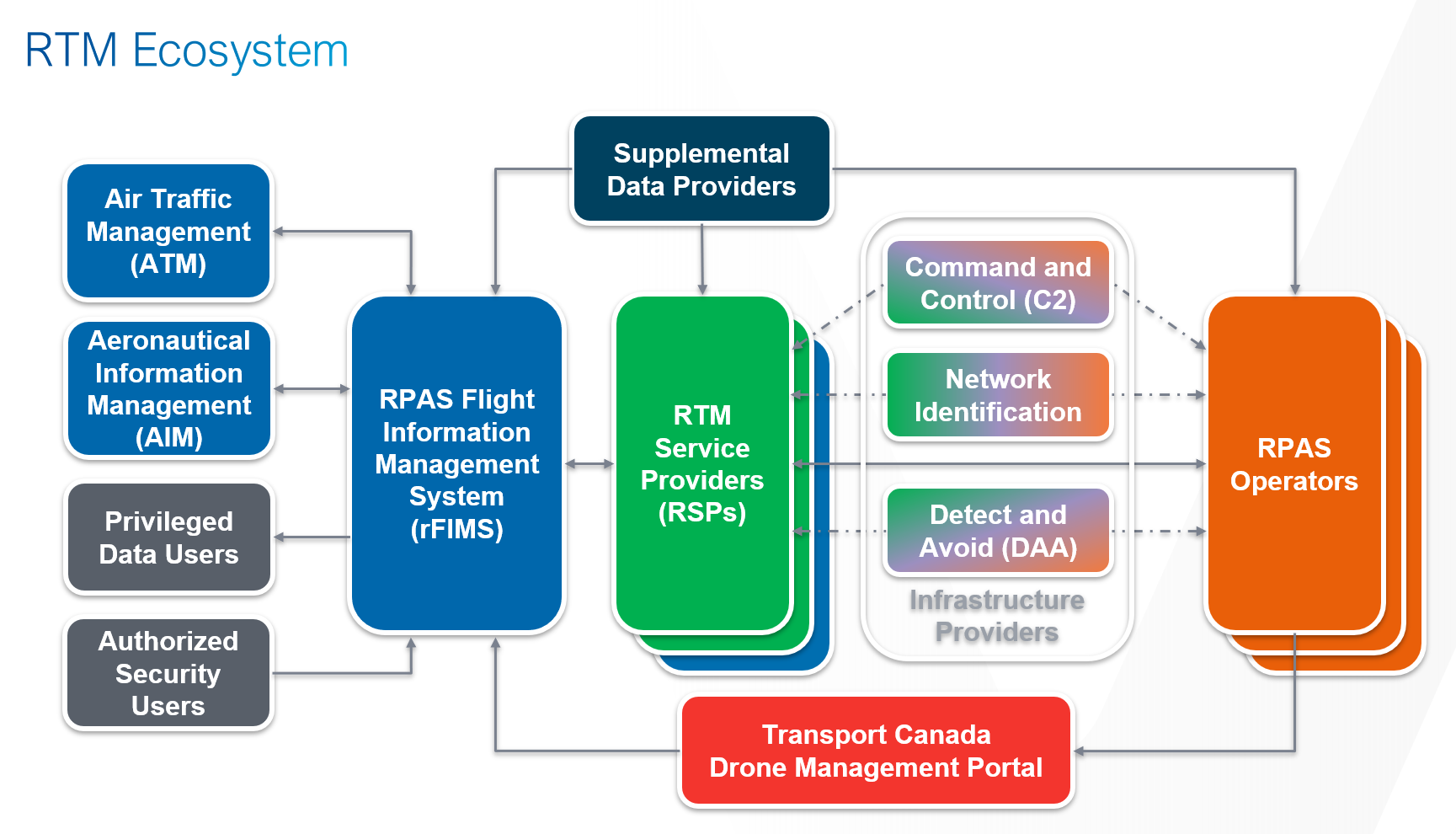







December 21, 2023
Imagine a world in which critical medical supplies could be delivered by a drone, exactly when a medical professional needed it, allowing for life-saving medical intervention. While this isn’t normally possible in Canada, it’s a future that NAV CANADA is preparing for.
As drones, also referred to as remotely piloted aircraft systems (RPAS), continue to improve and become more widely available, they bring with them many potential commercial uses – like the direct delivery of consumer goods, long-range inspections and land surveys, and even the rapid transport of life-saving transplant organs.
Today, operators can fly their drones within visual line of sight (VLOS) with the help of NAV Drone, which lets them access important information, schedule flights, and request permission to fly in controlled airspace. The next frontier in Canada is to enable operations beyond visual line of sight (BVLOS), which will begin to unlock the most exciting and ambitious applications of drone technology.
To prepare for this, NAV CANADA is developing drone traffic management services to monitor drone operations and ensure safe integration with the Canadian aviation ecosystem.
Different kinds of drones come with different concerns when it comes to RPAS Traffic Management (RTM). Larger drones that carry the necessary navigation, communications and surveillance equipment can generally integrate into existing air traffic management (ATM). Small and low-level drones, however, pose very different challenges.
Integrating these drones into Canada’s airspace requires a new, reliable way to communicate with operators, ensuring that all parties have the information they need to conduct and enable safe operations at all times. This solution also needs to be able to operate at a large scale, as the RPAS sector grows in the future.
Following months of research and collaboration with government, industry and international partners, the vision for the future of drone operations in Canada has been outlined in a Concept of Operations (ConOps) document. This document is a starting point, and will continue to evolve, but it already gives a clear image of what the future might hold.
The centerpiece of this vision is a planned RPAS Flight Information Management System (rFIMS), which will be developed and delivered by NAV CANADA to provide operators with the support and services needed to safely operate small drones beyond the visual line of sight.
rFIMS will be the key to enabling a new collaborative RTM ecosystem in which a range of actors play distinct and important roles.

A diagram of the proposed RTM Ecosystem
We’re still years away from bringing this vision into reality. As the rFIMS team continues to work closely with stakeholders, our next step will be to launch a Request for Proposal (RFP) to find a vendor who can help us build and deliver this system.
To ensure a collaborative process that reflects the many interests and requirements across the aviation and RPAS sectors, we are engaging with stakeholders on the ConOps document. To learn more about the RTM vision in the meantime, we encourage you to read the ConOps document, which is now available on NAV CANADA’s website.